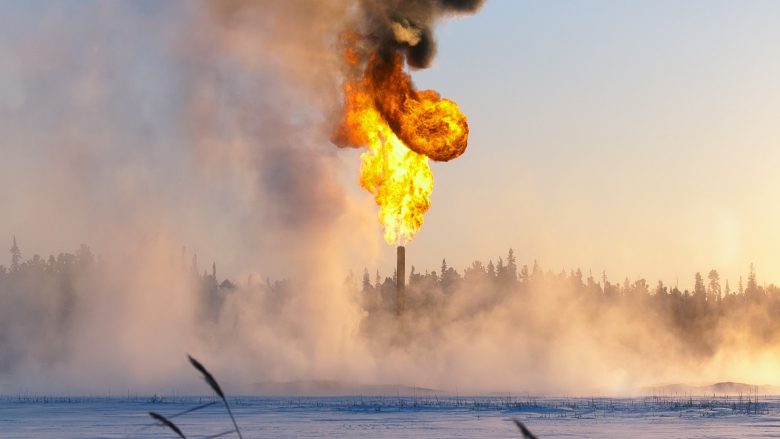Gloabl flaring has shrunk by three percent to 139 billion cubic metres (bcm) in 2022, according to recent data from the World Bank Global Gas Flaring Tracker Report.
In 2021, the number stood at 144 bcm.
Gas flaring, the burning of natural gas associated with oil extraction, takes place due to a range of issues.
Oil production increased by five percent to 80 million barrels per day (bbl/d) from 77 bbl/d in 2021. As a result, the global average flaring intensity—the amount of gas flared per barrel of oil produced—dropped to 4.7 m3/bbl in 2022 from 5.1 m3/bbl in 2021.
According to the World Bank, three countries; Nigeria, Mexico, and the United States, accounted for most of the decline in global gas flaring in 2022. Two other countries—Kazakhstan and Colombia— stand out for consistently reducing flaring volumes in the last seven years.
Ranking as the top flaring countries, the World Bank said Russia, Iraq, Iran, Algeria, Venezuela, the United States, Mexico, Libya, and Nigeria account for nearly three-quarters of flare volumes and just under half of global oil production.
“This wasted gas could displace dirtier energy sources, increase energy access in some of the world’s poorest countries, and provide many countries with much-needed energy security. If put to productive purposes, the amount of gas flared in 2022, could generate as much electricity as Sub-Saharan Africa currently produces in a year,” the report outlined.
The report estimates that in 2022 gas flaring released 357 million tonnes of CO2e, 315 million tonnes in the form of carbon dioxide, and 42 million tonnes CO2e in the form of methane. Methane, the primary component of natural gas, is a potent but short-lived greenhouse gas, with a warming potential much higher than carbon dioxide. The oil and gas industry is a significant source of methane emissions globally.
Reducing methane emissions is one of the most crucial climate actions that can be undertaken in the short term.
And this is what ExxonMobil – Guyana’s only oil producer intends to do.
The company, with major assets in the US, said it eliminated routine flaring across its Permian Basin operated assets per the World Bank Zero Routine Flaring Initiative, while still increasing production to meet growing energy needs.
ExxonMobil awarded top certification for Methane Emissions Management in Permian Basin | OilNOW
“And we are on track to end routine flaring across all global upstream operated assets by 2030,” it continued.
In Guyana, the country has strict policies to curb flaring. It has US$50 fine for every tonne of carbon dioxide emitted at any offshore project. This was guided by the Polluter Pays Principle (PPP), which is prescribed by the Environmental Protection Act of 1996.
Guyana receives GY$1.7B in payments for flaring from ExxonMobil | OilNOW



